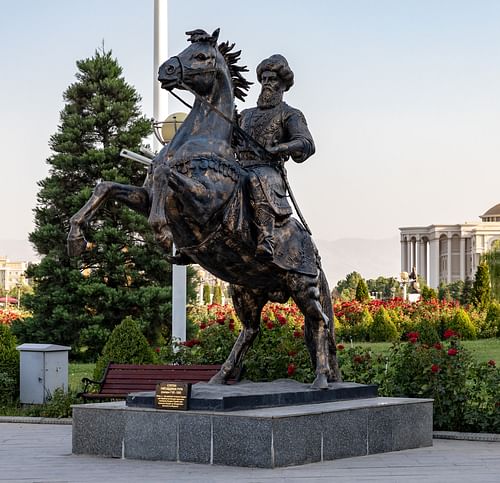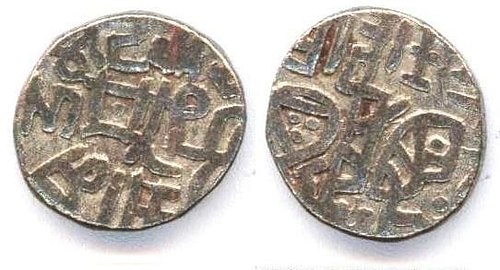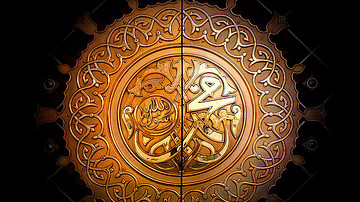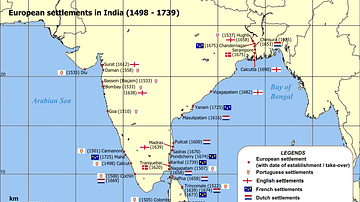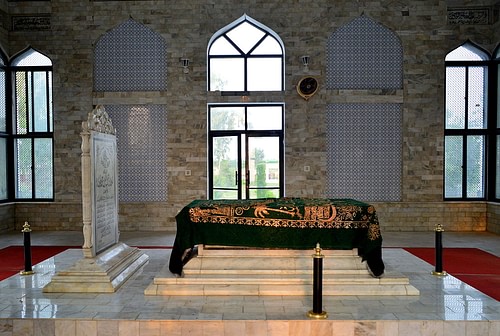
Shihab al-Din (also Muʿizz al-Din Muhammad ibn Sam), popularly known as Muhammad Ghori (r. 1173-1206 CE), was the Muslim ruler who laid the foundation for the subsequent Islamic ruling dynasties of India which saw its pinnacle later in the Mughal Empire (1526-1857 CE). He ruled a vast area comprising parts of modern-day Afghanistan, Pakistan, India, Iran, Bangladesh, Turkmenistan, Tajikistan together with his elder brother Ghiyath al-Din Muhammad (c. 1139-1202 CE), which widely came to be known as the Ghurid or Ghorid Empire.
Muhammad Ghori was of Persian origin, however, his exact ethnicity is still debated. He is undoubtedly one of the greatest generals of Islamic and Indian history. Though he was defeated in many battles, notably by Chahamana ruler Prithviraj III (r. 1178-1192 CE) in the First Battle of Tarain in 1191 CE, by Gujrati Chalukya ruler Mularaja II c. 1178 CE and by the rulers of the Khwarazm Empire, he never gave up his conquest and established a vast empire. However, he could not consolidate his empire before he was assassinated in 1206 CE. His main objective was to annex more provinces, and as a shrewd general, he used his religion whenever it became necessary to inspire his forces.
He practised the Sunni faith of Islam and was the one who truly established Islamic supremacy in the Indian subcontinent. Being a very able administrator but without an offspring, Muhammad understood that not only did he require able courtiers to his realm, he would also need some of his closest aides to succeed him and take control of his empire once he is gone. It was also a practice amongst the Islamic rulers to nurture their slaves who would grow on to become some of the closest confidantes of the sultans. In the same way, Muhammad Ghori picked some of his most talented slaves and brought them up with special training generally given to princes. Upon his death, his favourite and most trusted slave Qutb al-Din Aibak took control of the most cherished regions of the rich Indian plains and became the first emperor of the Delhi Sultanate (1206-1526 CE). Taj al-Din Yildiz became the ruler of Ghazni, Nasiruddin Qabacha the ruler of a region centred around Multan, and Muhammad Bakhtiyar Khalji became the first Islamic ruler of Bengal region.
Early Life & Ascension
Islamic rulers started their invasion of India when a general by the name of Mohammad bin Qasim was sent by the Umayyad Caliph c. 710/711 CE for further conquest and he captured Sindh and Multan (now in Pakistan) from the then Hindu king Raja Dahir. Later on, when the Ghaznavid Dynasty rose to power, Sultan Mahmud of Ghazni (r. 999-1030 CE) made his several ferocious raids into India in the early 11th century CE which gave an impetus to the later Ghurids.
The ascension of the Ghurids started from the time when due to the vacuum left by the decline of the earlier Islamic dynasties such as the Samanids, Seljuk Turks, etc., two empires simultaneously rose – the Khwarazm Empire based in Persia and the Ghurids based in Ghor – changing the political landscape of West and Central Asia. The Ghurids started as the vassals of the Ghaznavids before they shattered and toppled the overlordship of the Ghaznavids due to their decline. The Ghurids rose to power during the time of their king Sultan Ala al-Din Husayn (r. 1149-1161 CE) who, in order to avenge his brothers who were killed by a Ghaznavid ruler, ravaged and burned the city of Ghazni which also earned him a nickname 'Jahan-Soz' which roughly translates to 'World Burner'.
Muhammad Ghori was born c. 1149 CE and was the nephew of Sultan Ala al-Din. When Ala al-Din and later his son Sayf al-Din died, Muhammad's elder brother Ghiyath al-Din came to the throne with the support of their nobles. He gave his younger brother many areas to rule; Muhammad became the ruler of Ghazni when they captured it in 1173 CE from the Oguz/Ghuzz Turks who had earlier seized it from the Ghaznavids, gradually establishing a solid base there for their further conquests.
Indian Campaigns
Muhammad Ghori after helping his brother in several campaigns, which secured their positions, turned his eye to India. Firstly, they were under continuous pressure from the Khwarazm Empire in the west, and secondly, Mahmud of Ghazni has already set a precedent of raiding the fabled rich lands of India. So, after ascending the throne of Ghazni in 1173 CE, Muhammad Ghori took the Gomal Pass and conquered Multan and Uchch in the northwest of the Indian subcontinent. Then in 1178 CE, just like Mahmud has done in Gujarat earlier, he crossed the Thar Desert and attacked the Solankis of Gujarat probably to imitate the same feat, only to be completely routed by the Gujarati ruler, which made Ghori change his mind and tactics. He soon abandoned the romanticism of a trans-desert invasion and concentrated his mind on Lahore for a secure base in the Punjab region to further launch his campaigns to India. By 1190 CE, he evicted the Ghaznavids from the Punjab area and conquered Sialkot, Lahore, and then also Peshawar. He then pressed for Delhi and the rich fertile lands of the Ganga-Yamuna Doab.
Two Battles of Tarain
During the same time in India, the Rajput clan of the Chahamanas (also known as the Chauhans) was in the ascendency under their charismatic ruler Prithviraj III. The Chahamanas had already conquered the Delhi region by this time from the Tomars, the erstwhile ruler and Prithviraj himself has made a lot of enemies by his continuous conflicts with the other Hindu rulers of the neighbouring regions. In 1191 CE, Muhammad Ghori took the initiative by storming a fort at Tabarhinda (Bhatinda now in Southern Punjab). Prithviraj's army rushed there to confront him and at a place called Tarain near Thaneswar in Haryana around 150 km from Delhi, Muhammad Ghori's forces were routed and they fled. A few sources (like John Keay's India: A History) also say that the battle was decided by personal combat between Muhammad Ghori and the commander of Prithviraj's army Govind Raja, where Ghori was severely wounded and could escape only due to the bravery of a Khalji warrior. The Chahamana forces did not pursue them in order to finish them off forever, instead, the Ghurid forces were able to escape properly to fight another day.
Muhammad went back to his dominion to recuperate and regroup. He subsequently recruited troops there from various ethnic communities – Turkic, Afghan, Persian etc. – and prepared for the next onslaught. When he invaded again in 1192 CE, it is said that he had a force of around 120,000 soldiers. This battle was a turning point in Indian history and consolidated the Islamic rule in the subcontinent. Though Prithviraj, with his 300,000 soldiers, had a numerical advantage over Ghori, the Rajput force had a lot of organisational problems. The Rajput army came from several different areas and communities, lacking unity. They were a collection of several clans, each unit under an individual clan leader with his own customs, unlike the strict central command of the Ghurid forces who were much better organised and used superior tactics. The Ghurid forces would encircle an enemy from the flanks after letting them penetrate deep into their formations, thereby cutting off their retreat. Also, in this Second Battle of Tarain, Muhammad Ghori made a surprise attack on the Rajputs when they were unprepared and took them by storm. By the time, the Rajputs could gather their arms and organise themselves, Prithviraj's forces were routed. Many lost their lives and Prithviraj himself was later captured and said to have been executed.
Ghurid Forces & Later Campaigns
One of the greatest features of the Ghurid forces was their central command under an able leader. Since the warriors of Central and West Asia have descended from the nomadic tribes of the steppe, where their survival depended on how fast they could ride to hunt down their prey, they were always ready for battle and could move large forces with short notice. Their central Asian horses were also superior, which gave their cavalry the speed and flexibility to launch sudden attacks, crush the enemy, and withdraw in a flash; a tactic much effective in battles. Their equipment was light compared to the Rajput army, and the chain of command was organised more efficiently. Their ready army could move quickly and invade without giving the enemy time to prepare.
The Second Battle of Tarain established the Ghurid rule in India with the chief Rajput ruler Prithviraj being beaten and Delhi captured for further incursions into the Indian subcontinent. Soon, the Turkic Ghurid forces captured much of Northern India with important places like Meerut, Ajmer etc. Muhammad Ghori then went back to his Afghan stronghold to help his brother consolidate the west. He left his slave general Aibak in control of Delhi and another of his generals, Muhammad bin Bakhtiyar Khalji continued east where he captured Bengal and its adjoining regions. In 1194 CE, Ghurid forces under the command of Aibak also defeated Jayachand of Kannauj, the last independent king of the famous Gahadavala Dynasty which ruled parts of present-day Uttar Pradesh and Bihar.
In the meantime, Mohammad Ghori was busy with several campaigns against the Khwarazm Empire. His elder brother died in 1202 CE, leaving him to return to Ghor immediately where he was crowned sultan by the nobles. After his ascension to the throne, he continued facing several assaults from the Khwarazm Empire rulers.
Death & Legacy
Muhammad Ghori faced constant warfare in his lifetime, and after ascension to the throne in 1202 CE, Ghor itself was under threat from the Khwarazm Empire. In 1203/1204 CE, a severe defeat encouraged some of his Indian counterparts to rise in revolt. In 1206 CE, he brutally suppressed a revolt from the Ghakkars or Khokkars, a martial community of Punjab, and left Indian affairs under the able leadership of his slave general Aibak. While returning to Afghanistan, somewhere in the Punjab region, in his camp, he was supposedly murdered by this same Khokkar community, though, it has also been conjectured that he might have been assassinated by a rival Islamic sect.
Muhammad Ghori's campaigns in India and elsewhere left a lasting impression for posterity. He had no offspring and was succeeded by his slave generals, whom he brought up as his own sons with superior martial training and education in order to make them able administrators in future. Qutb al-Din Aibak rose to the most prominent position of the Sultan of Delhi and Hindustan. He was very well trained in the affairs of the state and army, as he had accompanied Muhammad on his various campaigns. When Aibak succeeded to the throne of Delhi, he annexed a huge area of the Indians plains, more than Muhammad would have originally envisaged. He was also a very able ruler who consolidated his empire and proved to be just and generous to his subjects. Unfortunately, he perished shortly in 1210 CE while playing polo. Aibak's legacy can even be witnessed today from the various existing monuments of Delhi. His dynasty is known today as Slave or Mamluk Dynasty.
Muhammad Bakhtiyar Khalji, his another slave, heralded the Islamic rule in the Bengal region of India. He was followed by several Islamic dynasties and sultans in Bengal. Bakhtiyar Khalji's influence in this region of India has had such impact, that even today folklore says that he captured parts of Bengal just with his few fellow galloping horsemen without much resistance from the local ruler. Though historical evidence does not support the legend, Muhammad Bakhtiyar Khalji is still remembered with awe and reverence in Bengal today. He, too, perished early while attempting to invade Tibet in 1206 CE, where he was defeated, fell ill, and was later assassinated.
Taj al-Din Yildiz succeeded to the throne of Ghazni, and he would be remembered more in history due to his claim on the throne of Delhi. He was defeated in a battle for the Sultanate by the Mamluk Sultan Shams-ud-din Iltutmish in 1216 CE and put to death later in the same year. Nasiruddin Qabacha, who became the ruler of Multan, also died while fighting Sultan Shams-ud-din Iltutmish in 1228 CE.
